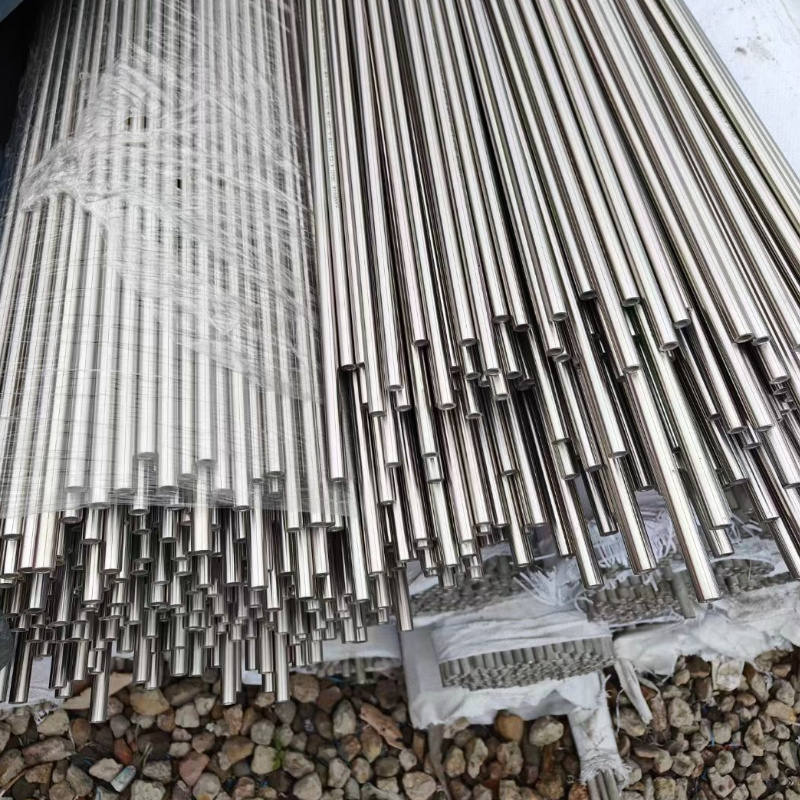close
Choose Your Site
Global
Social Media
Author: Site Editor Publish Time: 2025-07-31 Origin: Site








Stainless steel is a versatile material that finds application in various industries due to its durability, strength, and corrosion resistance. Among the different grades of stainless steel, 316 and 316L are particularly noteworthy. These two grades are often used interchangeably, yet they have distinct differences that can impact their suitability for specific applications. Understanding these differences is crucial for industries that rely on stainless steel for critical applications. This article delves into the characteristics, applications, and differences between 316 and 316L stainless steel, with a focus on their implications for the use of Stainless Steel Pipes And Tubes.
316 stainless steel is part of the austenitic family of stainless steels, which are known for their excellent corrosion resistance and high-temperature strength. This grade contains molybdenum, which enhances its resistance to pitting and crevice corrosion in chloride environments. The presence of nickel further improves its corrosion resistance and mechanical properties. 316 stainless steel is non-magnetic and can be easily welded and processed, making it a popular choice for applications in harsh environments.
316 stainless steel is widely used in industries such as chemical processing, marine, and pharmaceuticals. Its ability to withstand corrosive environments makes it ideal for use in equipment exposed to seawater and aggressive chemicals. In the food and beverage industry, 316 stainless steel is used for processing equipment that requires frequent cleaning and sterilization. Additionally, its high-temperature strength makes it suitable for heat exchangers and furnace parts.
316L stainless steel is a low-carbon version of 316, which offers similar corrosion resistance and mechanical properties. The reduced carbon content minimizes the risk of carbide precipitation during welding, which can lead to intergranular corrosion. This makes 316L an excellent choice for applications that involve welding. Like 316, 316L is non-magnetic and offers good formability and weldability.
316L stainless steel is often used in the construction of chemical and petrochemical processing equipment, where welding is required. Its resistance to corrosion and low carbon content make it suitable for pharmaceutical and food processing industries. Additionally, 316L is used in the manufacturing of surgical instruments and medical implants due to its biocompatibility and resistance to body fluids.

The primary difference between 316 and 316L stainless steel is the carbon content. 316L has a lower carbon content, which reduces the risk of carbide precipitation during welding. This makes 316L more suitable for applications that involve extensive welding. However, 316 stainless steel offers slightly better mechanical properties due to its higher carbon content. The choice between the two grades depends on the specific requirements of the application, such as the need for welding, corrosion resistance, and mechanical strength.
Both 316 and 316L stainless steel offer excellent corrosion resistance and mechanical properties, making them suitable for a wide range of applications. The choice between the two depends on the specific needs of the project, such as the requirement for welding and the operating environment. Understanding the differences between these two grades is essential for selecting the right material for critical applications. For industries that rely on Stainless Steel Pipes And Tubes, choosing the appropriate grade can ensure optimal performance and longevity.
1. What is the main difference between 316 and 316L stainless steel?
The main difference is the carbon content. 316L has a lower carbon content, making it more suitable for welding applications.
2. Can 316L stainless steel be used in marine environments?
Yes, 316L stainless steel is suitable for marine environments due to its excellent corrosion resistance.
3. Is 316 stainless steel magnetic?
No, 316 stainless steel is non-magnetic in its annealed state.
4. Why is 316L preferred for welding?
316L is preferred for welding because its low carbon content reduces the risk of carbide precipitation, which can lead to corrosion.
5. Are there any applications where 316 is preferred over 316L?
316 may be preferred in applications that require slightly higher mechanical strength, as it has a higher carbon content than 316L.
6. Can 316L be used for medical implants?
Yes, 316L is often used for medical implants due to its biocompatibility and resistance to body fluids.
7. What industries commonly use 316 and 316L stainless steel?
Industries such as chemical processing, marine, pharmaceuticals, and food processing commonly use 316 and 316L stainless steel due to their excellent properties.